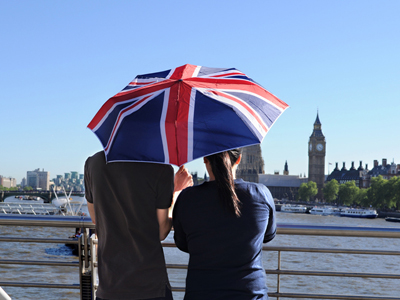
Climate of the UK
One of the key themes of GCSE geography is weather and climate. You are expected to know the difference between the two terms and to understand the links between air pollution and climate change. You also should be able to give examples of how climate change can affect the lives of people. This quiz is concerned only with the UK climate, and changes in the weather and climate of the United Kingdom. Weather is created on a daily basis but climate is the weather averaged over a period of 30 years. When you start to look closely at climate variation in the UK, it can get quite complicated!
The world can be divided up into different climatic zones. These have different names depending on which system you use, the UK is in the northern temperate (or moderate) zone which is an area where it is most likely to have cold winters and mild summers. This doesn't mean that every winter will be cold or every summer mild, there can be relatively mild winters and some hot summers as well.
Climate depends on many other factors too, so although the climate of the UK is classed as temperate or moderate, there are differences between different regions of Britain. In the mountains of Scotland the winter and summer temperatures are likely to be lower than the temperatures of the south of England. Apart from being further north, the altitude and relief makes a difference to the climate of an area. The climate can vary over very short distances too, take for example a single hill. The climate will vary from the top of the hill to the bottom of the hill e.g. the top is likely to be colder and windier. It will be different on the south side of the hill to the north side e.g. there will be more sunshine on the south side. The vegetation can affect the climate too, slowing down the wind and shading the sun. These small areas of different climate are called microclimates. The main climate and the microclimate determine what plants and animals live in a habitat. Gardeners sometimes deliberately create microclimates in their gardens so they can grow certain types of plant.
The climate of the UK is also referred to as being maritime - that means it is heavily influenced by the sea. On the west side, there is the Atlantic Ocean, on the east is the North Sea. There is a current of warmer water that crosses the Atlantic, it is known as the North Atlantic Drift and is powered by the Gulf Stream which originates in the ocean south of Florida in the USA. This makes the climate of the west side of the UK milder than it would otherwise be.
Since most of the weather of the UK comes from the south west, this also means that the climate of the UK will include high precipitation. The air above the North Atlantic Drift is slightly warmed and can pick up and hold more moisture in the form of water vapour than if it were colder. As the incoming moist air from the Atlantic meets the mountains and moorland of the west of the UK, it is forced upwards where it cools and condenses. The moisture then falls as rain and snow so the climate of the western side of the UK has more precipitation than the east.
Ready for more?
not all...
quizzers. Try to win a coveted spot on our Hall of Fame Page.







